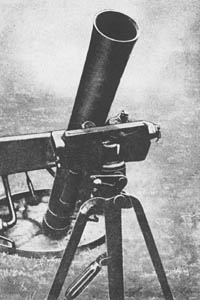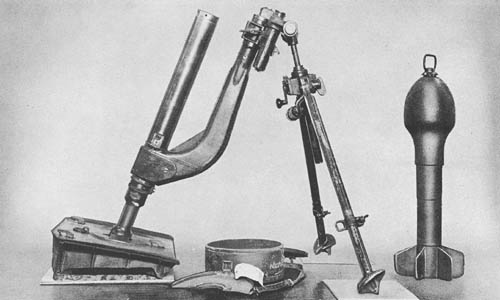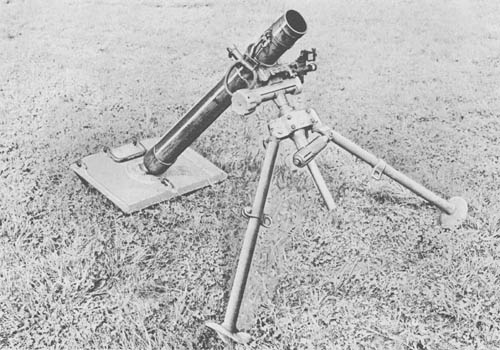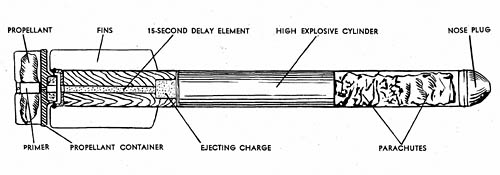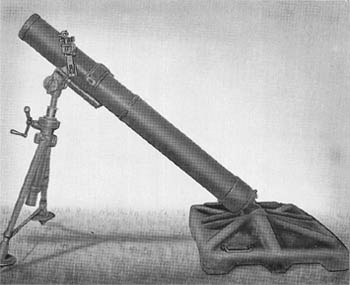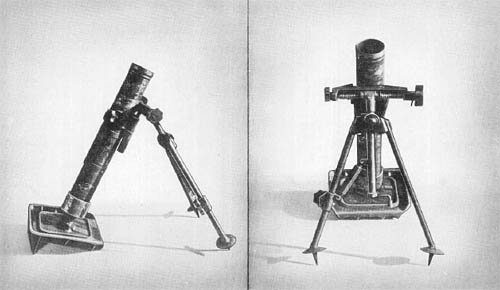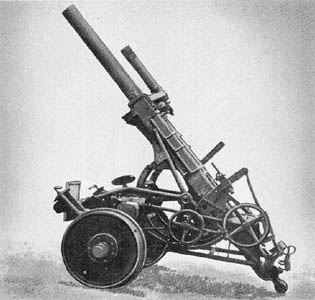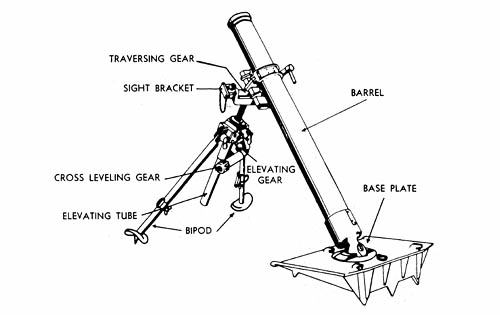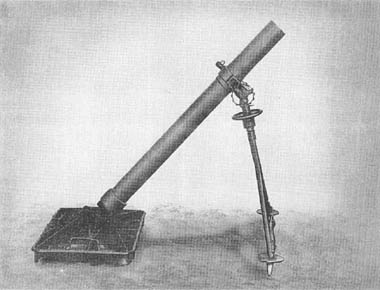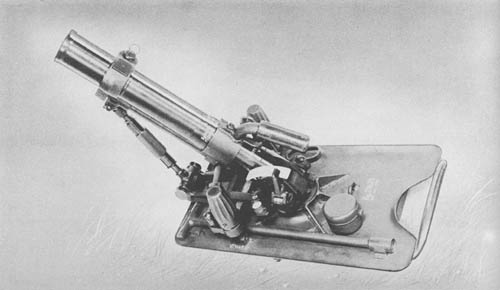
The German 5 cm light mortar, developed in 1936, is a compact piece which can be easily broken down into two loads for transport. It differs radically from the conventional mortar design in that it is trigger-fired.
A short, seamless tube is threaded at its base to the breech ring containing the firing mechanism. The firing-pin assembly is actuated by a manually operated trigger, fixed to the rear half of the breech ring. Two large holes in the rear of the ring serve as trunnions by which the mortar is fastened to the cradle, and about which the mortar is elevated.
The forward end of the mortar tube is connected to the base plate by means of two brackets and the elevating mechanism. The front bracket is tightened around the tube by a bolt; the rear one fits around the breech ring and is locked by a set screw.
Two elevating mechanisms, one coarse and one fine, permit a total range of elevation from 43.5° to 90°. A range scale, calibrated in meters from 0 to 525 is screwed to the left side of the breech ring. A hook-shaped lever, pinned to the rear left side of the cradle, rides along the range scale as the elevation of the mortar is changed and serves as an indicator. The combination leveling and traversing mechanism allows a total traverse of 30°, 15 to the right and left, respectively. Center traverse is indicated by an arrow, pointing to an “0” engraved on the rear top of a ball joint about which the cradle traverses.
The base plate, constructed of sheet metal, is reinforced by ribs welded to the bottom side. Two ribs, serving as the main spades, are set at an angle of 23° from the vertical at front and rear of the plate. Reinforcing ribs, welded perpendicularly to the base plate and running lengthwise as well as crosswise, also act as spades.
SPECIFICATIONS
| Caliber | 50 mm (1.969 ins.) | |
| Weight (complete) | 31 lb. | |
| Length of tube | 13.75 ins. | |
| Mount | Cradle and base plate, no bipod | |
| Firing mechanism | Trigger-operated | |
| Method of loading | Muzzle | |
| Muzzle velocity | 230 f/s | |
| Range (maximum at 45° elevation) | 550 yds. | |
| (minimum at 85° elevation) | 50 yds. | |
| Elevation (maximum) | 90° | |
| (minimum) | 43.5° | |
| Traverse | 30° (15° right; 15° left) | |
| Elevating and traversing mechanisms | Enclosed, well-sealed | |
| Direct-sighting equipment | None | |
| Cross leveling system, | Operated by leveling knobs and bubble | |
| Ammunition | H.E. (equipped with fin assembly, point-detonating fuze, & booster). Wt. 2.00 lb. |
German: p. 124
